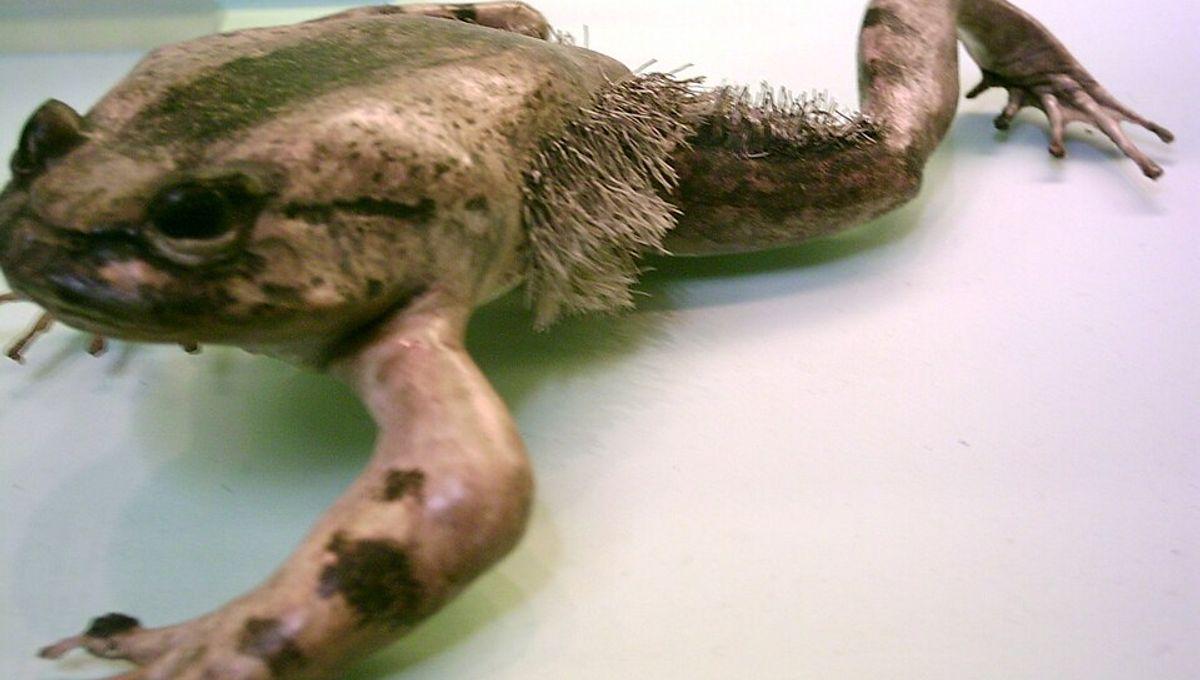The vicious claws of the hairy frog were first noted around 1900, but it wasn’t until after the turn of the millennium that scientists discovered how these strange amphibians produce them — or rather, snap them. When threatened, the hairy frog (Trichobatrachus robustus) deliberately breaks its own toe bones, which then pierce through the skin to form cat-like claws that it can rake across an attacker. No wonder it’s earned the nickname “horror frog.”
The rest of this article is behind a paywall. Please sign in or subscribe to access the full content. Claws are rare among amphibians, and unlike those seen in mammals they don’t have a keratinized veneer. The wolverine frog’s claw are also transient, slipping in and out of the skin of the fingers. Whether baring the claws is an active process, meaning the bones slip back inside when the frog is relaxing, isn’t known for certain, but it seems the frogs can actively create the claws by snapping their own bones. Researchers working with wolverine frogs observed how they would use them when being handled, writhing their bodies and using their claws to rake along the handler’s skin with the goal of making cuts. And apparently, they can be pretty brutal. “Durrell (1954) later provided the first report of handling live Trichobatrachus and raised the more likely possibility that these claws are for defence as they can inflict ‘deep bleeding wounds [to] the person holding it’,” wrote the authors of a 2008 paper. “This claim is verified by Cameroonians who hunt Trichobatrachus for food using long heavy spears [...] or machetes such that they can kill the frogs without handling them and being harmed.” They therefore seem to carry out the same function as many mammalian claws, only with a much more badass point of origin. And that’s not the only wolverine-like feature of horror frogs. Horror frogs are also known as hairy frogs due to the bizarre fleshy filaments the males develop during mating season. They’re not hairs like those on our heads, but instead long strands of flesh containing blood vessels, which enable them to take in more oxygen through their skin when the time comes to watch over their brood. It’s possible that being an amphibian is in part to thank for the frogs being able to sprout their claws in this rather savage way, as this group of animals are pretty gifted when it comes to regeneration. A similarly brutal approach to self defense is seen in the Spanish ribbed newt, found in the Iberian Peninsula and Morocco, which pushes its ribs through its skin when threatened. To add insult to injury, they also a secrete a poison through their skin which means that when the salamander’s aggressor gets nicked by its prey’s sharp broken ribs, it gets a nasty dose of toxicity aimed to put it off its meal. Spiky and poisonous? We’ll pass, thanks.






